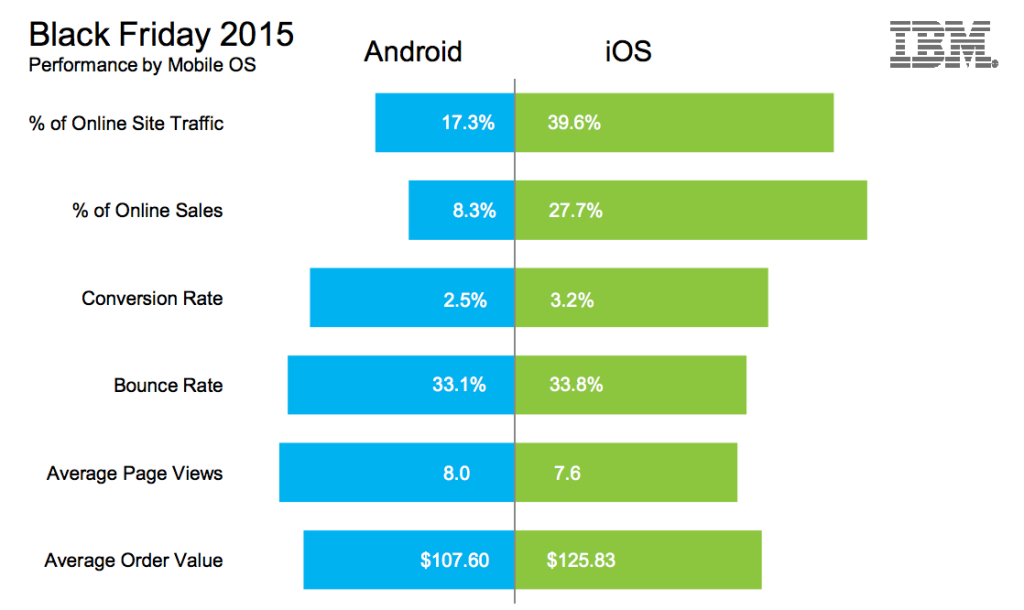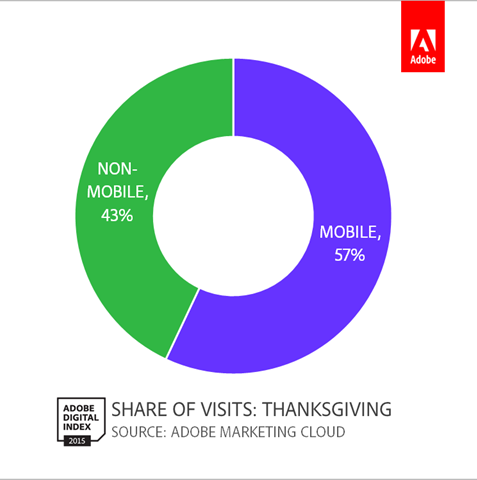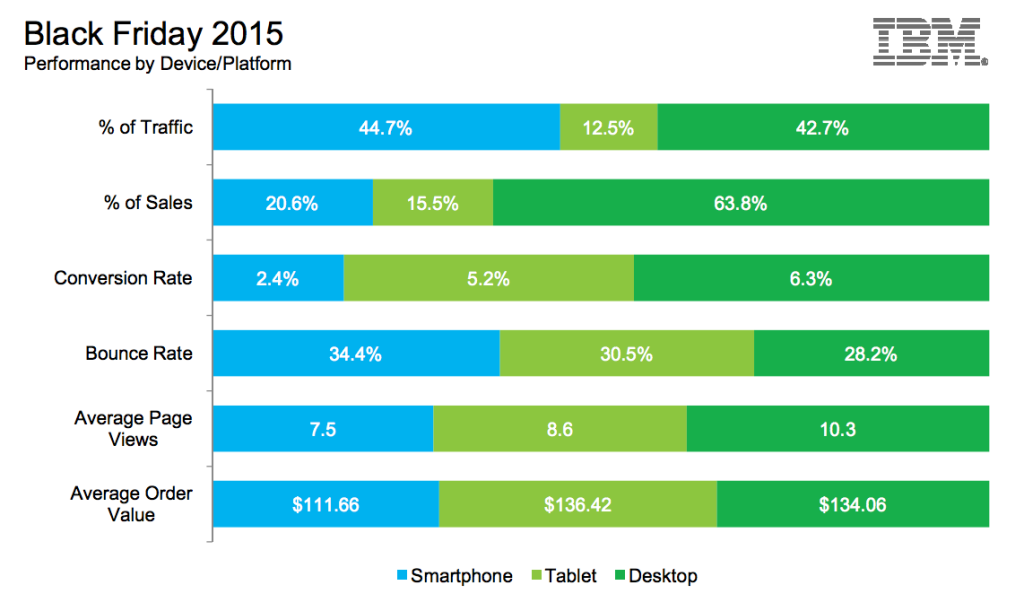Consumers are asking themselves, “why stand in line when I can go online?” For years, online selling has grown considerably thanks to increasingly accessible, mobile, and affordable technology. This year more than ever, customers are beginning to take notice – especially during the holiday selling gauntlet. Whether it’s the cold, their devices, or those YouTube videos of overly-aggressive Black Friday mobs, it seems that a majority of shoppers have moved online to buy during the holidays. Let’s take a look at online sales’ overall performance this year.
Giving Thanks for Thanksgiving Sales
Thanksgiving is widely considered to be the underdog selling day, but it’s certainly seen some of the most growth as consumers begin cracking open their wallets while they sit around the crackling Thanksgiving fire. It accounted for $1.73 billion in sales on Thanksgiving according to Adobe, and when you compare that to Black Friday’s $2.72B, it’s hard to call it an underdog.
While it may not be as big of a cash cow as Black Friday or Cyber Monday, turkey day proved to be the most mobile of all three. Mobile made up 57% of site visits, with IBM claiming a massive 60%. I suppose it makes sense considering the fact that it’s a holiday right before Black Friday, and consumers have time on their hands and deals on their mind. Plus, what better way to tune Aunt Bertha out than by browsing sites for some Thanksgiving deals?
For a more in-depth look at Adobe’s research, scroll through their awesome presentation.
Speaking of Aunt Bertha, shouldn’t consumers be busy cooking up turkeys and chatting with family or friends on the holiday? Sure, but they’re also looking for deals. Adobe noticed that 14% of all the day’s revenue arrived thanks to email promotions. The holiday is gaining steam, too, with a year-over-year growth rate of 26% according to IBM. As mentioned earlier, mobile made up more than half of all traffic, but mobile devices made up 40% of all sales during the day, which is huge. Thanksgiving may prove itself to be a mobile-focused selling day.
Black Friday
There’s definitely a stigma attached to Black Friday, and it’s not hard to understand. With all the traffic, the crowds, even the in-store brawls, many of your average consumers are more than willing to sit back and take advantage of promotions from the comfort of their own computers and devices.
They make up the majority, in fact. After surveying consumers, the National Retail Federation’s Black Friday research revealed that more of them, 103 million vs 102 million, shopped online instead of offline this Black Friday. Forty-two percent of respondents shopped solely online, while the remainder were a mix of offline and online. Adobe also claims that Black Friday online sales jumped 14% this year, according to it’s audit of 4,500 online stores.
In terms of online sales this Black Friday, IBM shows over half of all site traffic came from mobile devices, but desktops remained the traditional king of sales. As per usual, the conversion rate on mobile devices is low compared to the amount of traffic they funnel, but we’ll talk about that below.
Interestingly, most mobile visitors purchase if they’re operating on iOS. It’s no surprise that iOS reaped the most mobile sales considering the splash Apple made with their mobile wallet, Apple Pay. Apple customers’ willingness to adopt new tech that the company pushes is renowned, and it will be interesting to see if Apple TV becomes a sales channel in the future.

For a more in-depth look at Thanksgiving and Black Friday performance, dive into IBM’s report.
Considering Cyber Monday is known for online deals, but many businesses offer Black Friday deals both in-store and online, Black Friday has quickly become pseudo-Cyber Monday. Is the period of time between Thanksgiving and Cyber Monday becoming just a promotion fueled extravaganza offered on whatever channel possible? The answer is mostly yes, and that’s the way it’s always been for the most part. But as long as there are holiday-high consumers actively looking for promotions, it’s good news for retailers. It’s only a matter of creating promotions that get customers to your site.
A Recurring Theme: M-Commerce
With all this talk of mobile, it was one of the largest and most anticipated trends this year. Although conversion rates may be low, traffic unexpectedly soared. The prevalence of smartphone and mobile device sales has been in the spotlight of ecommerce for a few years now as more and more consumers adopt the devices, using them to research and purchase products online. But that latter word, “purchase,” has always lagged behind, with many smartphone wielding shoppers using their devices to research products that they then buy via desktop
Desktop and laptop computers remain the standard home of credit card digits, but they’re quickly being usurped by more mobile devices that have larger screens, greater affordability, better load times, and obviously boosted accessibility to the web. As mentioned earlier, all studies, whether it’s NRF, IBM, Adobe or ChannelAdvisor report that more than half of all traffic arrived through mobile. The hard part is getting mobile visitors to convert, which depends on many factors like device, targeted promotions, confidence in security, and willingness to use mobile wallets. But this holiday season has at least accomplished step one: getting a very significant amount of mobile traffic to sites.
Cyber Monday
Although it has the home field advantage since it’s based on online sales, Cyber Monday won the online selling game. Adobe, once again analyzing over 125 million visits to 4,500 online stores, reported a record breaking $3B in online sales, up 12% from 2014. Compared to the preceding holidays, 49% of shopping visits were via mobile, with 28% leading to a sale. It’s also smiles all around. Adobe claims that Cyber Monday also received the most positive mentions on social media at 56%, as opposed to Black Friday’s 40%.
Who Wins?
The short answer is that all online retailers won this year, and will likely continue to do so.
But if we’re going to rank the holidays, I think it’s safe to say Cyber Monday is the top selling day for most e-retailers – it did rake in the most online sales after all. In terms of mobile traffic and sales, Thanksgiving surprisingly seems to be the champion. As for Black Friday, it’s yet another day of promotions, and it will be interesting to see how it blurs online and offline selling.
If this holiday season proved anything, it’s that online shopping is no longer just an up-and-coming way of shopping. It’s become a standard. When you have more shoppers shopping online than offline on Black Friday, a Cyber Monday that breaks records, and a holiday that racks in $1B+ of online sales, it’s hard to think otherwise.
Photo: Jason Tester Guerrilla Futures, Flickr





